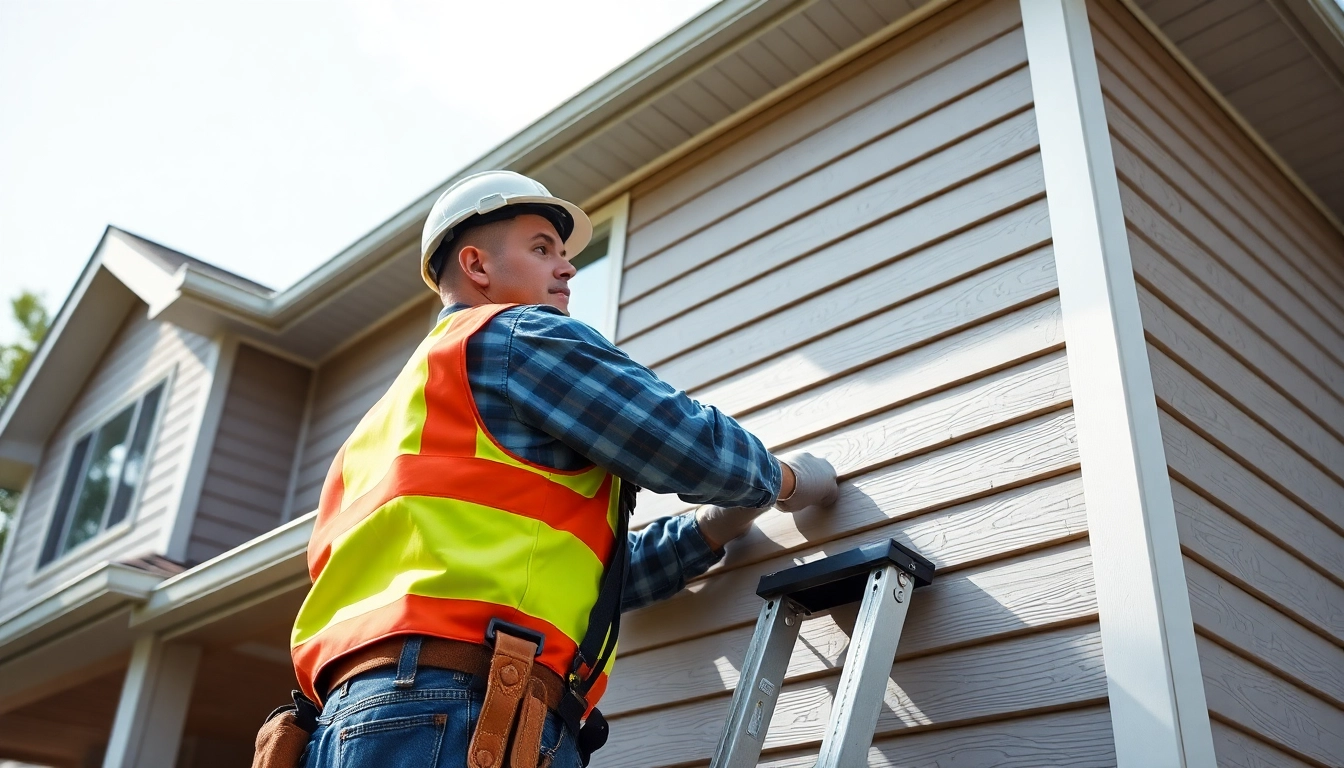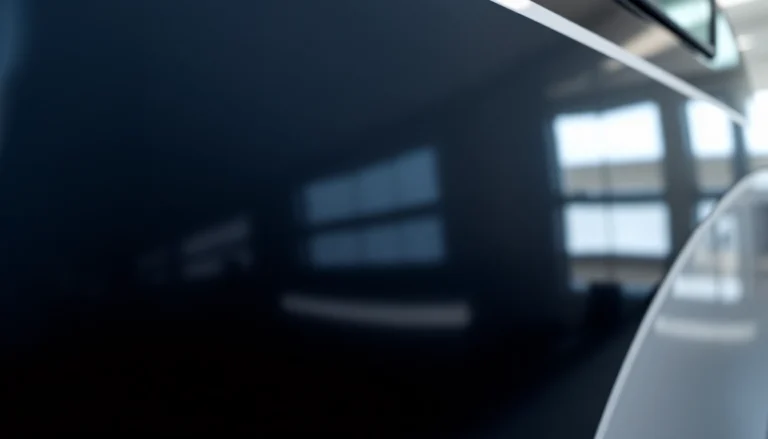Understanding the Role of a Siding Contractor
When it comes to enhancing the exterior of your home, few upgrades offer as significant a return on investment as siding replacement or installation. Not only does proper siding improve your home’s curb appeal, but it also plays a critical role in energy efficiency, weather protection, and long-term durability.
If you’re considering these upgrades, engaging a professional siding contractor is essential. These specialists aren’t just installers; they are experts who understand the nuances of different materials, building codes, climate considerations, and aesthetic impacts. This comprehensive guide aims to demystify the role of a siding contractor and help you make informed decisions for your home.
What Services Do Siding Contractors Provide?
Siding contractors offer a wide range of services that go beyond merely installing siding panels. Their expertise is crucial during every stage of a siding project, from initial consultation to post-installation maintenance. Typical services include:
- Assessment and Consultation: Evaluating the existing exterior, identifying structural issues, moisture problems, and recommending suitable siding options based on your home’s architecture and climate.
- Material Selection Assistance: Guiding homeowners through choices among vinyl, cedar, fiber cement (like James Hardie), and composite options, balancing aesthetics, durability, and budget.
- Removal and Disposal: Safely removing old siding and debris, ensuring minimal disruption to your property.
- Installation: Precise, code-compliant installation, including weather barriers, insulation, and trim work to ensure longevity and performance.
- Repairs and Replacements: Addressing damaged siding sections, restoring integrity, and matching existing materials when appropriate.
- Maintenance Advice: Providing guidance on cleaning schedules, inspecting for damage, and performing minor repairs to extend the lifespan of your siding.
- Inspection and Certification: Ensuring the work meets local building codes and industry standards, often issuing warranties for quality assurance.
By choosing a comprehensive service provider, homeowners can ensure each aspect of the siding project is handled with professionalism and expertise, reducing costly mistakes and ensuring a seamless exterior transformation.
Qualities of a Reliable Siding Contractor
Selecting the right siding contractor is crucial to the success of your project. Reliability and professionalism distinguish the best from the rest. Top qualities include:
- Experience and Expertise: Proven track record with projects similar to yours, ideally with specialization in the material you prefer (e.g., James Hardie, cedar, vinyl).
- Licensing and Certification: Proper licensing according to state and local laws ensures legal compliance and technical competence. Certifications from manufacturers or industry organizations (e.g., James Hardie Elite Preferred Contractor) are a plus.
- Insurance Coverage: Adequate liability and worker’s compensation insurance protect you from financial liability in case of accidents.
- Strong References and Reviews: Positive feedback and references from previous clients demonstrate consistent quality and customer satisfaction.
- Transparency and Communication: Clear estimates, detailed contracts, and open communication channels help build trust and prevent misunderstandings.
- Attention to Detail: Precision in measurement, installation, and finishing details ensures a professional, long-lasting result.
- Warranty and Guarantees: Confidence in their work, offering warranties on both labor and materials, indicating accountability.
When evaluating potential contractors, ensure they exhibit these qualities. Take time to review their portfolios, ask about certifications, and verify insurance certificates.
How to Choose the Right Siding Contractor for Your Project
Making an informed decision requires careful research and comparison. Consider these critical steps:
- Define Your Project Scope: Clarify which siding material you want, your budget, and timeline expectations.
- Seek Multiple Bids: Obtain detailed written estimates from at least three reputable contractors for comparison. Beware of quotes significantly lower than others, as they may indicate subpar quality.
- Check Credentials and References: Verify licensing, insurance, and request references. Contact previous clients to evaluate their satisfaction.
- Review Portfolio and Past Projects: Assess the quality of previous work through photos or site visits.
- Ask About Warranties and Guarantees: Clarify post-installation support, warranty terms, and what factors are covered.
- Evaluate Communication and Professionalism: Trust your instincts regarding responsiveness, clarity, and professionalism during your interactions.
- Assess Material Knowledge: Ensure they understand the pros and cons of different siding options aligned with your home’s needs.
Remember, your home’s exterior is a significant investment. Choosing a trusted, experienced siding contractor ensures that your investment is protected and your home’s value is maximized.
Types of Siding Options and Materials
Vinyl, Cedar, and Composite Siding Overview
The choice of siding material sets the foundation for your home’s curb appeal, durability, and maintenance needs. Here’s an overview of popular options:
- Vinyl Siding: The most common and budget-friendly option, vinyl siding offers a wide range of colors and styles with minimal maintenance. It’s resistant to moisture, pests, and fading, making it ideal for various climates.
- Cedar Siding: Known for its natural beauty and timeless appeal, cedar provides excellent insulation and can be stained or painted in numerous colors. However, it requires periodic maintenance to prevent rot and insect damage.
- Composite Siding: Made from engineered materials, composite siding combines the appearance of wood with enhanced durability and lower maintenance. It often mimics cedar or other natural materials and is resistant to pests and rot.
Other common options include fiber cement (like James Hardie), aluminum, and steel siding, each with specific benefits tailored to different needs and environments.
Benefits and Drawbacks of Different Siding Materials
Understanding the advantages and disadvantages of each material helps in making an educated choice:
| Material | Pros | Cons |
|---|---|---|
| Vinyl | Affordable, low maintenance, resistant to pests and rot, wide color selection | Can crack or fade over time, less authentic appearance, potential environmental concerns during manufacturing |
| Cedar | Natural beauty, excellent insulation, can be stained or painted, biodegradable | High maintenance, susceptible to rot and pests without proper treatment, higher upfront cost |
| Composite | Durable, low maintenance, mimics natural wood appearances, resistant to pests and moisture | Higher initial cost, potential for fading or chipping if not maintained properly |
The choice ultimately depends on your aesthetic preferences, environmental considerations, maintenance capacity, and budget.
Matching Siding Materials to Your Home’s Style and Climate
Consider your home’s architectural style and climate zone:
- Traditional and Colonial Styles: Cedar or fiber cement sidings enhance historical charm.
- Modern and Contemporary Homes: Vinyl with smooth finishes or metal siding provides sleek lines.
- Harsh Climates (extreme cold, high humidity, storm-prone areas): Fiber cement and steel siding offer superior resistance and longevity.
- Temperate Climates: Vinyl or cedar can perform well with appropriate maintenance.
Consulting with an experienced siding contractor ensures chosen materials will withstand local weather conditions while complementing your home’s aesthetic.
Estimating Costs and Budgeting for Siding Projects
Average Pricing for Different Siding Styles
Prices can vary significantly based on material, home size, and complexity. Here’s a general overview:
- Vinyl Siding: $2.50 – $10.75 per square foot; typical total cost for a 2,000 sq ft home ranges between $5,000 and $21,500.
- Cedar Siding: $6 – $12 per square foot; total costs generally span $12,000 to $24,000 for similar-sized homes.
- Fiber Cement (James Hardie): $10 – $15 per square foot; project costs typically fall between $20,000 and $40,000.
Factors Influencing Siding Installation Costs
Several elements affect your project’s final price:
- Home Size: Larger homes require more materials and labor, increasing costs.
- Material Choice: Premium materials like fiber cement or specialty textures add to costs.
- Complexity of Design: Architectural details, multiple stories, or intricate trim work require more labor and time.
- Existing Conditions: Repairing underlying issues before siding installation adds expenses.
- Location: Labor and material costs vary regionally.
- Permitting and Inspection: Local regulations may necessitate fees and inspections.
Tips for Getting Accurate Quotes from Siding Contractors
To ensure fair pricing and avoid surprises, follow these best practices:
- Get Multiple Bids: Obtain at least three detailed estimates for comparison.
- Specify Exact Materials and Details: Clarify your preferred siding types, colors, and finishes.
- Request Itemized Quotes: Break down costs for materials, labor, permits, and disposal.
- Check for Hidden Fees: Confirm whether the quote includes minor repairs or additional work if needed.
- Verify References and Past Work: Validate contractor reliability before signing agreements.
- Understand Warranties: Clarify warranty coverage duration and what is included.
Accurate estimates depend on clear communication and transparency. Having detailed proposals will empower you to make confident decisions and allocate budgets effectively.
Best Practices for Siding Installation and Maintenance
Preparation and Installation Steps
Proper installation is critical for performance and durability. A professional siding contractor will follow these key steps:
- Site Preparation: Protect landscaping, remove existing siding if necessary, and inspect for underlying issues.
- Moisture Barrier Installation: Apply weather-resistant barriers or house wraps to prevent water intrusion.
- Insulation and Furring Strips: Install additional insulation or furring if specified, to improve thermal performance.
- Precise Measurement and Cutting: Ensure panels are correctly measured, cut, and fitted to avoid gaps and buckling.
- Siding Attachment: Secure panels per manufacturer specifications, maintaining proper overlaps and fastening for wind resistance.
- Finishing: Install trims, corner boards, and window or door accents for seamless aesthetics.
- Inspection and Cleanup: Conduct thorough inspection, clean up debris, and address any mismatches or issues immediately.
Maintenance Tips for Longevity and Curb Appeal
Maintaining your siding extends its life and preserves its visual appeal. Recommendations include:
- Regular Cleaning: Wash with mild soap and water annually to remove dirt, mold, and mildew.
- Inspect for Damage: Check for cracks, chips, or loose panels after storms or harsh weather.
- Repair Promptly: Address small issues before they escalate into costly repairs.
- Paint and Stain: Refinish cedar or wood-based sidings every few years to maintain color and prevent rot.
- Trim Vegetation: Keep bushes and trees trimmed to prevent damage and promote airflow.
- Seal Gaps: Apply caulking around windows and doors to prevent water intrusion and air leaks.
Adhering to maintenance routines ensures your siding remains durable, attractive, and energy-efficient for decades.
Common Mistakes to Avoid During Siding Projects
Even experienced homeowners and contractors can make missteps. Common mistakes include:
- Choosing the Cheapest Bid: Sacrificing quality for cost can lead to poor installation and premature failure.
- Neglecting Preparation: Failing to remove old siding or repair underlying issues causes future problems.
- Ignoring Climate Considerations: Not accounting for local weather conditions can reduce siding performance.
- Improper Ventilation: Sealing too tightly without proper ventilation can lead to moisture buildup and mold issues.
- Failing to Follow Manufacturer’s Instructions: Skipping steps or improperly fastening panels voids warranties and reduces durability.
- Post-Installation Neglect: Forgetting routine inspections and maintenance shortens siding lifespan.
Evaluating Project Success and ROI
Signs Your Siding Was Installed Correctly
Quality installation manifests in several ways:
- Panels are level, evenly spaced, and securely fastened without buckling.
- Seams and joints are tight and free of gaps.
- Trim pieces are flush and aligned with the siding panels.
- Fixtures, windows, and doors are properly flashed and sealed.
- The exterior appears uniform with consistent color and texture.
- Absence of water stains or mold behind siding upon inspection.
These indicators confirm that your siding contractor adhered to industry standards, ensuring long-term performance.
How Siding Enhances Home Value and Energy Efficiency
Well-installed siding boosts curb appeal, which directly influences home resale value. According to industry data, siding projects can recoup up to 75-80% of their cost in increased home value. Besides aesthetics, siding acts as an insulative barrier, reducing heating and cooling costs:
- High-quality fiber cement and insulated vinyl siding significantly improve thermal resistance.
- Proper installation ensures a tight building envelope, reducing drafts and energy leaks.
- Additional insulation layers behind siding can further enhance energy savings.
Investing in premium siding not only protects your home but also means lower utility bills and increased property appeal.
Measuring Customer Satisfaction and Long-Term Benefits
A satisfied homeowner’s feedback often highlights the importance of professional workmanship, clear communication, and quality materials. Tracking long-term benefits can include:
- Reduced maintenance and repair expenses over the years.
- Stable home value appreciation.
- Enhanced energy efficiency leading to lower utility bills.
- Maintaining aesthetic appeal through periodic cleaning and minor repairs.
Partnering with a reputable siding contractor is crucial to realizing these benefits fully. Regular inspections and maintenance further ensure your home remains protected and attractive for decades.







